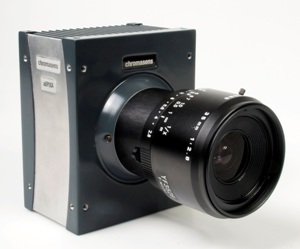Jul 30 2013
Chromasens is equipping its allPIXA CCD colour line scan camera with new functions for even greater comfort and performance as well as an application programming interface (API). Firmware version 1.3 supports onboard colourprocessing with up to 4 individual sets of high-performance colour conversion matrix (CCM) and offers a unique feature for internal camera keystone distortion compensation.

Camera API and firmware update are on the Chromasens website – http://www.chromasens.de – available to download for free in the partner area. The allPIXA line scan camera is designed for the inspection and quality control of various objects at high speed with its high line frequency of up to 110 kHz.
Solutions for typical BV challenges
The colourappearance of the presentation during image captureand image reproduction does not always correspond to the original. Often corrective measures are carried out via a monitor or printer. With the new CCM function this correction can already be carried out in the allPIXA in real-time. The user receives standardized image data ahead of time, ensuring an optimized processing workflow. The result is a significantly increase in the quality and speed of inspection tasks.
The internal camera colour correction not only takes place in real-time but also does so with a higher bit depth. Rounding errors during conversion are therefore avoided. A total of up to four individual data sets can be saved in the camera.
If the camera is not installed perpendicular to the scan object then a trapezoidal distortion usually occurs, so-called keystone distortion. This usually also occurs if a bright field condition is required for an inspection task (usually for reflective objects). In this case the camera has to be set at a defined angle to the surface, according to the task, which also leads to keystone distortion. The new firmware update ensures automatic correction of trapezoidal distortion.
Firmware version 1.3 also makes it possible to create the shading and offset correction internally in the camera. This, above all, simplifies commissioning in applications in which images cannot be made available for the external calculation of the references.
The function enhancement includes an additional mode which significantly reduces the data rate of the camera link interface. This allows a secure transfer of image data within the CameraLink specification for applications with extended cable length. There is also a new feature which enables info data in the image, for example, the serial number of the camera, the encoder status, the current scan speed and much more.
Users can use the camera API (Application Programming Interface) to control and monitor the allPIXA directly from their own applications. The complete package is made up of the application programming interface, a set of C++ examples with full source code (Visual Studio 2005/2010) as well as a comprehensive documentation. The camera API runs on Microsoft Windows (from XP and higher) and can be used in 32 and 64-bit environments.